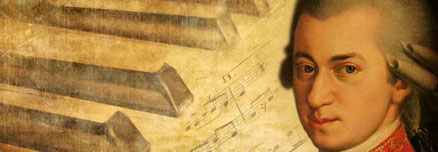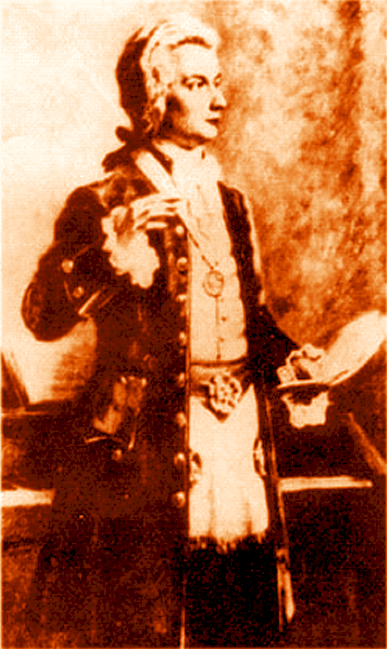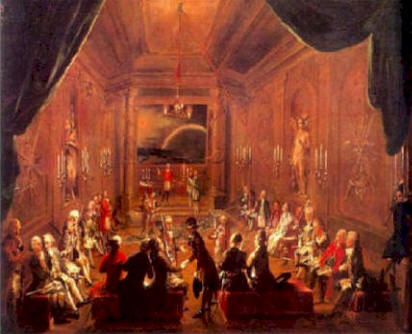

of the Templar Strict Observance
On December 14, 1784, Mozart joined Freemasonry and was initiated into the rank of apprentice in the Viennese lodge of “charity” (die wohltätigkeit).
From January 7, 1785, Mozart was promoted companion at the request of his lodge and with the usual ceremonies by the lodge “to true concord” (zur wahren eintracht).
We do not know until today the exact moment of Mozart’s promotion to the rank of master, but his presence in the lodge on April 22, 1785 allows us to locate approximately the date.
It was about the same time that his father, Léopold Mozart, was also admitted to the “beneficence” lodge and that he very quickly passed the three degrees of knowledge.
On entering Freemasonry, Mozart entered a new initiatory world for him. He takes this step in order to renew himself, to resume his whole life with new strength and in a new light.
The spirit of Freemasonry had germinated in him for a long time. In love with freedom, equality, and fraternity, convinced of the need for reciprocal exchanges and common work intended to advance humanity, the arts and the sciences; by joining Freemasonry, he fulfills this desire for common work and invests himself in the depths of himself in this spiritual quest facilitated by the warmth of fraternal friendship that he receives from his “brothers” Freemasons.

It is the works of the fall of 1784 and in particular the sonata in C minor K 457, which mark the first influences of Freemasonry on the compositions of Mozart. This influence will be found in the last seven years of his existence through the depth and intensity of his life as a Freemason.
Let us quote three works particularly imbued with this Masonic symbolism.
The first is the cantata “Die Maurerfreude” K 471, which is truly Mozart’s first major Masonic composition, performed on April 24, 1785 at a lodge banquet in Vienna.
We already find in this composition a unity which combines the originality of the personal style and the sober and stripped expression of “spiritual” feelings. This work shows with what seriousness and what enthusiasm Mozart, in the depths of himself, engaged in masonry.
The second is the Masonic funeral music K 477 performed during a lodge in Vienna in memory of two recently deceased Stricte Observance brothers.
We are far from an occasional work dedicated to the death of two friends. The feeling which animates the work is not a simple resignation in the face of death, but the translation of a rebirth to a new, spiritualized, divine life.
Finally the last is the opera Singspiel “the magic flute” K 620 performed for the first time in Vienna on September 30, 1791.
The magic flute, which on the surface seems to be a simple fairy tale, turns out in reality to be a true work of defense and glorification of Freemasonry. The allusions are more or less open and are found throughout the work. It is also not necessary to be a Freemason to notice the correspondence between passages of the booklet and Masonic texts that were published at the time. The Masonic references of the work are also numerous: we speak of brotherhoods of initiates, ritual unfolding. This is found in particular in the passage of the priests’ choir “O Isis und Osiris” of the second act: the character Tamino has not yet faced the third part of the tests, the most difficult; but already the initiates hope that the young prince will soon be worthy of being admitted among them.